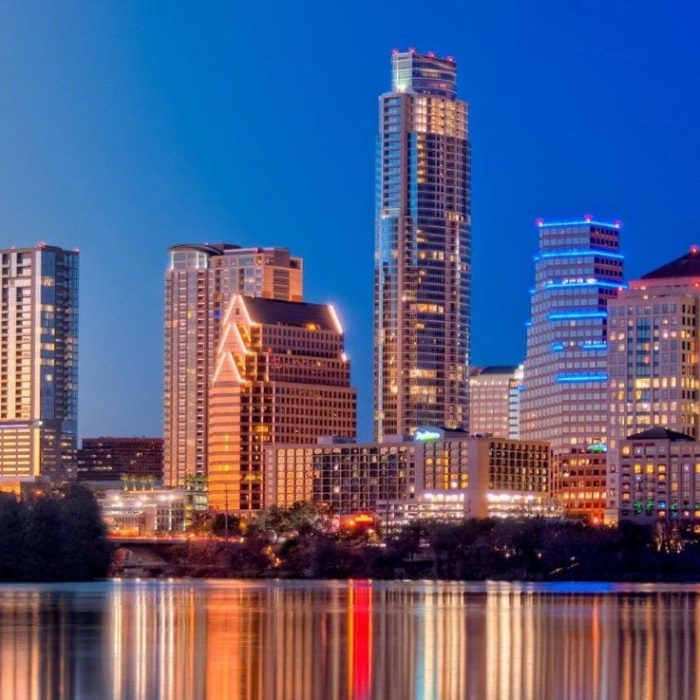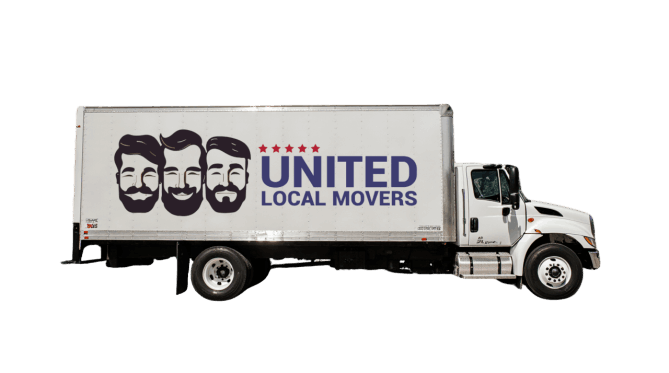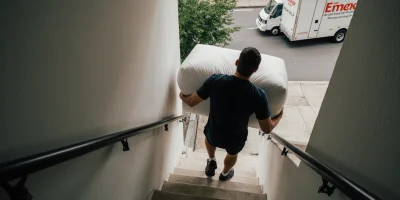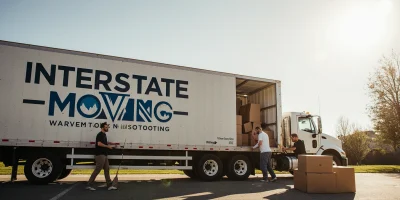Home > Interstate Moving > Moving to Texas > Moving to Austin
Moving to Austin
Austin, Texas, is one of the fastest-growing cities in the United States, with a population of nearly 1 million in the city and over 2.4 million in the metro area. Known as the “Live Music Capital of the World,” Austin is famous for its thriving arts scene, tech boom, and outdoor lifestyle. It’s also home to the University of Texas at Austin, one of the largest universities in the nation.
Moving to Austin means joining a city that combines creativity, entrepreneurship, and Southern hospitality. From world-famous festivals like SXSW and Austin City Limits to its reputation as a tech hub dubbed “Silicon Hills,” Austin is attracting families, young professionals, and retirees from across the country.
At the same time, Austin faces challenges: rising housing costs, traffic congestion, and hot summers. Still, its vibrant culture, booming economy, and community spirit make it one of the most desirable relocation destinations in the U.S.

Why More People Are Moving from Other States to Austin
Austin has become a magnet for people leaving high-cost states like California, New York, and Illinois. The number one reason is economic opportunity. Major tech companies like Apple, Google, Tesla, and Oracle have expanded in Austin, creating thousands of jobs. The city has also seen a surge in startups, supported by venture capital investment and a young, educated workforce.
Affordability — relative to other tech hubs — is another factor. While housing costs have risen, Austin remains more affordable than San Francisco or New York. Families and professionals find they can enjoy a higher quality of life at a lower price.
Lifestyle is also a huge draw. Austin blends big-city amenities with a laid-back vibe. Outdoor activities like kayaking on Lady Bird Lake, hiking Barton Creek Greenbelt, and weekend trips to the Hill Country give residents a balance between work and play.
The city’s cultural reputation is another reason. Austin is proud of its slogan, “Keep Austin Weird,” reflecting its creativity, independence, and acceptance. Its music, food, and arts scenes attract people who want a city with personality.
Finally, Texas’s tax advantages — no state income tax — make Austin even more appealing to professionals and businesses.
Pros of Living in Austin
One of the biggest pros is the booming economy. With tech giants relocating here and a strong entrepreneurial culture, Austin offers job opportunities across industries. Salaries are competitive, especially in technology, healthcare, and education.
Another advantage is the cultural scene. Austin is a global music destination, with live music available every night in venues across the city. Festivals like SXSW bring international attention, while local events keep the community engaged year-round.
The outdoor lifestyle is another highlight. With more than 300 days of sunshine annually, residents can enjoy parks, lakes, and trails throughout the year. Lady Bird Lake, Zilker Park, and Barton Springs are central to Austin’s lifestyle.
Austin’s diversity and inclusivity also make it attractive. The city has a strong LGBTQ+ community, vibrant immigrant populations, and a reputation for being welcoming and progressive.
Finally, food is central to life here. From barbecue and Tex-Mex to food trucks and farm-to-table restaurants, Austin’s dining scene is one of the best in the country.

Ready to get moved? Get a FREE quote now
Book your move easily and stress-free!
Cons of Living in Austin
The most significant drawback is housing costs. As Austin has grown, demand for housing has outpaced supply, pushing median home prices above $500,000 and rents for one-bedroom apartments above $1,700.
Traffic is another issue. Austin’s infrastructure has struggled to keep up with population growth. I-35 and Mopac Expressway are notorious for congestion, and commute times are steadily increasing.
The weather is another con. Summers are hot, with temperatures regularly exceeding 100°F. While the sunshine is appealing, the heat can limit outdoor activities in peak summer.
Public transportation is limited. Capital Metro operates buses and a small commuter rail line, but coverage is insufficient for a city of Austin’s size. Most residents rely on cars.
Finally, the cost of living overall is rising. While Austin is still more affordable than San Francisco, it is more expensive than Dallas, Houston, or San Antonio. Newcomers need to budget carefully.

What Life is Like in Austin
Life in Austin is creative, energetic, and outdoorsy. Downtown is vibrant, with skyscrapers, live music venues, and the University of Texas campus anchoring the city. East Austin has a hip, artsy vibe with murals, cafes, and breweries, while South Congress (SoCo) is known for boutique shopping, restaurants, and music venues.
Neighborhoods provide diverse options. Hyde Park offers historic charm, Mueller has modern urban planning, and the suburbs of Round Rock, Cedar Park, and Pflugerville attract families seeking affordable housing and good schools.
Community events are part of daily life. Austin City Limits, SXSW, Pecan Street Festival, and Trail of Lights are just some of the events that bring the city together.
The lifestyle is laid-back. Austinites often spend weekends outdoors — kayaking on Lady Bird Lake, biking on trails, or enjoying picnics at Zilker Park. The Hill Country, with its wineries and scenic drives, is just a short trip away.
Austin’s creative energy, diversity, and outdoor lifestyle make it one of the most livable cities in America, despite its challenges.
Living Costs in Austin
Austin’s cost of living is higher than most Texas cities but lower than many national metros. Housing is the largest expense.
| Category | Austin | National Average |
|---|---|---|
| Housing (Rent per Month) | $1,750 | $1,570 |
| Utilities | $180 | $180 |
| Groceries | $340 | $330 |
| Transportation | $160 | $140 |
| Healthcare | $440 | $440 |
While salaries in Austin’s tech and healthcare sectors are competitive, newcomers should plan for higher housing costs than in other Texas cities like Dallas or San Antonio.

Ready to get moved? Get a FREE quote now
Ready to get moved? Get a FREE quote now
Schools and Education in Austin
Austin is served by Austin Independent School District (AISD), which educates over 70,000 students. The district has high-performing schools, magnet programs, and bilingual education. Quality varies by neighborhood, with areas like West Austin generally offering stronger schools.
Charter schools and private schools provide additional options for families, with institutions like St. Andrew’s Episcopal School and Regents School of Austin among the most respected.
Higher education is a major part of Austin’s identity. The University of Texas at Austin is one of the largest and most prestigious public universities in the U.S., known for strong programs in business, law, and engineering. Other institutions include St. Edward’s University, Huston-Tillotson University, and Austin Community College.
The city’s strong education system makes it appealing for families and students, while UT Austin drives research, innovation, and a youthful energy throughout the city.
Transportation and Getting Around
Austin’s rapid growth has outpaced its infrastructure. Traffic congestion is a daily reality, especially along I-35 and Mopac Expressway.
Public transportation is limited. Capital Metro operates buses and a commuter rail line (the Red Line) between downtown and northern suburbs, but coverage remains limited. Most residents rely on cars.
Cycling and scooters are popular in central Austin, with dedicated bike lanes and trails. Walking is practical downtown and in neighborhoods like SoCo and East Austin.
For air travel, Austin-Bergstrom International Airport provides domestic and international flights. Its rapid expansion reflects Austin’s growth as a business and cultural hub.

United Local Movers: Our Services
Relocating to Austin is easier with movers who understand the city’s growth and layout. United Local Movers provides professional packing, secure storage, and long-distance relocation services.
Whether moving into a downtown condo, a suburban home in Round Rock, or a rental near the University of Texas, our crews know how to manage every detail of Austin moves.
With transparent pricing and customized plans, United Local Movers ensures a smooth and efficient transition to Austin.
Average Cost to Move to Austin
Moving costs depend on distance and services, but Austin moves are generally more affordable than coastal relocations.
| Move Type | Estimated Cost |
|---|---|
| Local Move (1-2 Bedrooms) | $1,000–$2,200 |
| Cross-Country Move | $3,400–$6,700 |
| Full Packing Services | + $400–$900 |
| Storage Options | $120–$280 per month |
United Local Movers provides upfront estimates with no hidden fees, making it a trusted choice for Austin relocations.


How to Choose the Right Moving Company
When moving to Austin, selecting the right mover is crucial. Always verify licensing, insurance, and request written estimates. Beware of vague or unusually low quotes.
Customer reviews are a valuable resource for identifying reliable movers. Look for companies experienced with Austin relocations, especially those familiar with traffic, apartment complexes, and suburban neighborhoods.
United Local Movers combines national reach with local expertise, ensuring professionalism and peace of mind.
Final Thoughts
Austin is a city of growth, culture, and opportunity. Its booming tech sector, vibrant music scene, and outdoor lifestyle make it one of the most exciting cities in the U.S. While rising housing costs and traffic pose challenges, the city’s affordability relative to other tech hubs and its unique cultural energy make it a top relocation choice.
For families, students, and professionals, Austin offers a welcoming community, a thriving job market, and endless entertainment. And with United Local Movers, your move to Austin can be efficient, professional, and stress-free.





